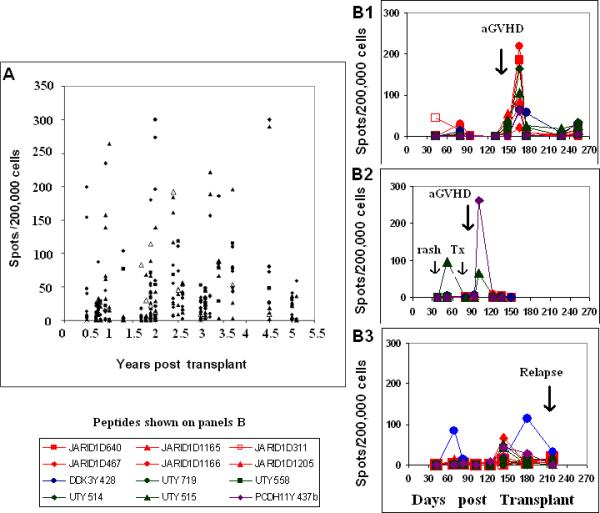Figure 4.

Persistence of T cell response to HY peptides in FM patients and temporal association with clinical acute GVHD.
Panel 4a depicts all HY peptide responses in 28 FM patients. The X axis represent years from HSCT to sample collection. The Y axis represents the number of spots/200,000 cells after subtraction of appropriate negative control. Values >20 spots/200,000 cells are considered positive. Responses can be detected as long as 5 years post transplant. Open triangles represent responses against the known HLA A*0201 restricted HY peptide. Panel 4b shows the prospective monitoring of three additional HLA A*0201 FM patients for 6-9 months following transplant. Samples were obtained monthly at regular follow-up visits. Patient A developed acute GVHD at approximately 3 months post-transplant. Patient B developed a rash at day 52 that responded to treatment. He subsequently developed grade 3 acute GVHD at 94 days post transplant. Patient C did not develop GVHD. ALL relapse was suspected at day 137 when a mediastinal mass was detected and immune suppression was rapidly tapered. Bone marrow relapse was confirmed at day 211. All three patients developed significant ELISPOT responses post transplant but to different HY peptides. HY responses were no longer detected after high dose steroids or other therapy was initiated.
